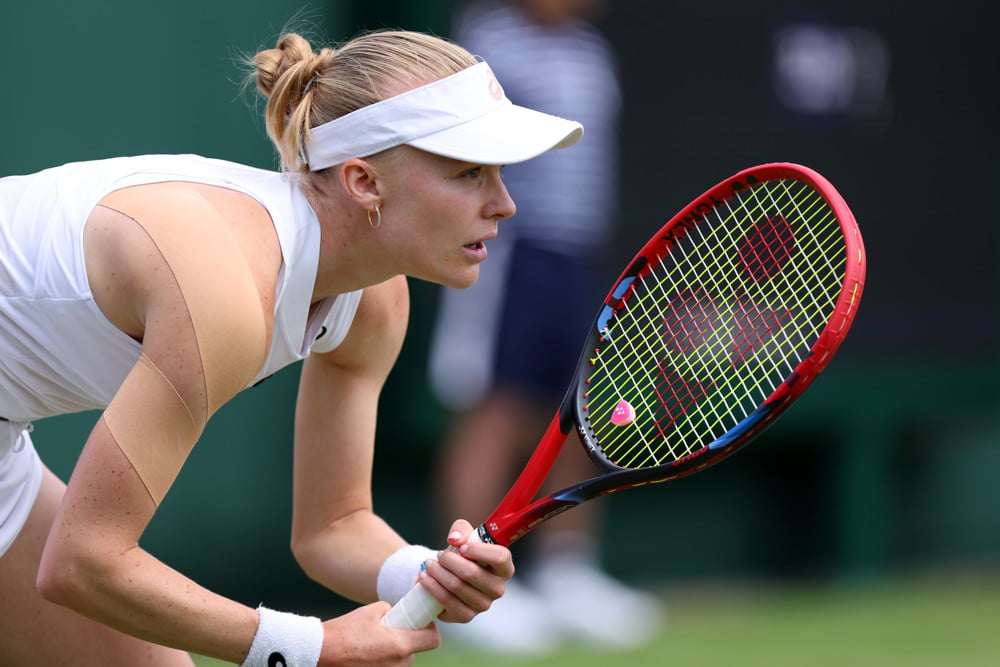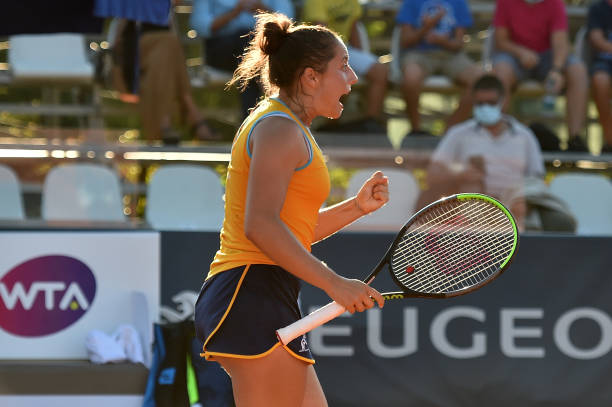Tips On How To Predict Tennis Predictions: How To Make The Most Of Surface Conditions
It is crucial to understand the conditions of the court and playing ability when making tennis predictions. Here are 10 tips to help you evaluate these elements effectively: Surface Preferences Different players perform better on different surfaces. Clay players may struggle on grass, whereas hardcourt players might consider clay courts to be too slow. Be sure to consider a player’s past performance on the court surface of the game in question.
Court Speed: The speed of the court may vary, even within the same surface. Courts with faster surfaces (such as grass and hard courts) are more suited to larger and more aggressive players. On the other hand slower courts like clay are more suited for those who can maintain a steady base.
Surfaces affect ball bounce in different ways. Clay courts produce a high bounce, which is advantageous for players with heavy topspin. Grass courts produce lower bounce, favored by flat hitters and serve-and-volley players.
Conditions in the weather can have a significant influence on the playing conditions. The high temperatures cause the ball to accelerate. Humidity slows it down. The breeze can create a disruption in timing and could favor players with more flexibility.
Indoor vs. Outdoor conditions are more reliable because they are free of factors such as sunlight and wind. players with strong, precise shots will benefit. Outdoor matches, on the contrary, require more flexibility due to the changing weather conditions.
Altitude: High-altitude locations (like in certain South American tournaments) cause the ball to move faster and bounce higher because of thinner air. This is usually beneficial to aggressive players and strong servers.
Recent Surface Changes: Players are often struggling to transition between surfaces. This is especially the case during the initial rounds of a tournament. Take note of how recently a player changed from one surface to another when making predictions.
Tournament-Specific conditions: Some tournaments are characterized by unique features like specific balls, court speeds and altitude. Knowing these specifics will give you an advantage in making predictions about the final outcome.
Time of match: On harder surfaces (like clay), matches tend to be more lengthy. players with greater endurance and perseverance will be able to benefit. The faster surfaces are typically marked by shorter rallies and faster points.
The ability to prepare and adapt. Some players adapt quickly to new surfaces, while others require more time to adapt. Review the player’s history to find out how they have adapted to changing surfaces. This is crucial prior to the beginning of tournaments.
Tennis predictions that take into account these elements will provide you with more insight into the game. Have a look at the top rated Best tennis Prediction Model for more advice including tips for betting today, us open odds womens, todays win, roland garros betting, tennis picks predictions, betting tips today, atp tennis odds, tennis sports betting, daily picks, wta picks and more.

Tennis Predictions: 10 Tips For Tournament Context
Here are ten suggestions to take into consideration: Tournament Prestige and Tier: Participants typically prefer certain tournaments over others. Ten tips below should be remembered The tier and prestige of the tournament: Players prioritize certain events over other events. Grand Slams or Masters 1000 events usually see top players at their best. However, lower-tiered tournaments may see less effort.
Defense Points – Those who did well in the previous year’s tournament might need to defend their ranking points. This can give them an extra incentive to keep going. If they have a few points, they will likely be less stressed.
Motivation of Players: Think about the motivations of the players. A player who is aiming to reach a certain rank, win a title, or have a high-quality return could be more enthusiastic at certain tournaments.
Surface Suitability: Certain tournaments are known for particular surface conditions (e.g. slow clay at Monte Carlo, fast grass at Wimbledon). People who are able to adjust their play to conditions of the surface excel.
Home Advantage: Sportsmen generally perform better when they are playing in their own home country or region. The presence of local fans can help increase confidence and performance.
Analyze draw strength: Evaluate the strength of the tournament’s draw. Draws that are dominated by elite players can cause early shocks. In contrast, a draw that has fewer players may lead to a lower ranking player making more progress than normal.
Player Form: Take a look at the form of a specific player before an event. The players who have been performing well over the past few weeks are more likely to maintain that performance.
Match Load and Fatigue: Consider a player’s recent match schedule. A long-running schedule of matches prior to a tournament can result in fatigue. However, a lack of match time could suggest that the player is not match fit.
Tournament History: Some players have a strong track record in specific tournaments due to favorable weather conditions or a familiarity with the venue, or even just the personal preferences. Check their past performance in the event.
Round-by-round performance: Some players begin their tournaments with a slow pace and improve as they advance. Some players may perform well at the beginning of a tournament but lose their momentum during the subsequent rounds. Knowing these patterns will aid in predicting the results at various stages of a tournament.
You can make better tennis predictions by considering these elements. Have a look at the top WTA Tennis for site info including picks tonight, matches and predictions, prediction s, womens tennis odds, betting sites for tennis, tennis odds tips, best sports prediction site, us open tennis betting, picks for today, betting sites for tennis and more.

Tennis Predictions: Tips On Weather Conditions
The weather conditions can have a significant impact on tennis games and should be considered when making predictions. Ten tips to include weather conditions into your analysis.Wind Impact: The wind can impact a player’s groundstrokes and serve, favoring players who are better in dealing with the rumblings of air or have an even shot. Check wind predictions and evaluate how each player’s performance is affected by weather conditions that are windy.
Temperature Effects: Extreme temperatures can have an impact on endurance and their performance. The players who have been used to similar climates and have played effectively in cold or hot conditions might be at an advantage.
Humidity levels: A high level of humidity can cause the ball to feel heavier. Also, they can affect the endurance of players. Consider how players handle these conditions, particularly in areas that are known for their high humidity.
Rain and court conditions: Rain can lead to delays and impact court conditions particularly on clay, courts, which can be slow and muddy. Rain on grass can cause it to become slippery and unpredictably. Find out how adaptable every player can be to different court conditions that result from rain.
Altitude: Matches played at higher altitudes (e.g., in places such as Bogota or Denver) can result in the speed of the ball being increased and better bounces. The players who are used to the conditions or have an excellent record at altitude might advantage.
Sun and Shade: Direct sunlight may distract and impair players’ vision. Some players perform best in indoor or shaded settings. Examine whether the player is capable of handling the sun and shade.
Weather Forecasts. Keep up-to-date with the most recent weather forecasts. Changes in weather could affect play. Knowing the forecast can help you determine what the weather will be similar to.
Surface Drainage: Different surfaces cope with the weather in different ways. Clay courts take longer to play after a rainstorm because they hold the water. Hard courts drain much better.
Assess player adaptability. Certain players are reputed to be flexible and adjust their game regardless of the weather.
Historical Performance in Weather Conditions: Look at how players have performed historically in similar weather conditions. When you analyze a player’s performance in similar situations this can help determine how they’ll perform in the current weather conditions.
You can improve your accuracy in tennis prediction if consider these weather-related variables.
